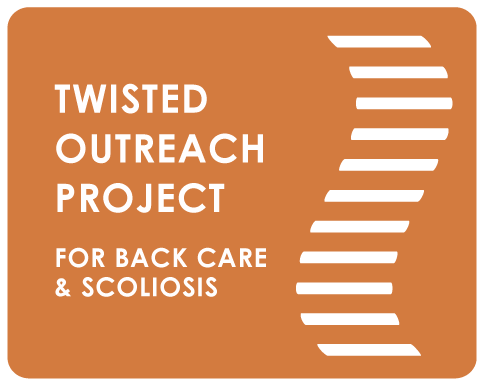Fusion Q&A with Martha Carter - How Much Pain Is Ok?
In our April Newsletter, we launched a Fusion Q&A series. Every month since, Martha has answered an anonymous question about scoliosis fusions.
****
QUESTION: I’m in constant chronic pain. How much pain is ok?
We were asked this question during our recent TOPS 21-Day Transformation class series, so I will share a version of the answer that my colleagues Kathryn, Sandra and I came up with here!
First and foremost, it is very common for people with scoliosis to experience discomfort in their bodies. For some, they remain pain-free and mobile, whereas other folks, especially those who go through fusion surgery, can often experience ongoing, chronic pain that is very disabling.
That is exactly why TOPS is offering as much education as possible to help individuals find solutions through mindful, therapeutic movement. We are living proof that there are many reliable bodywork techniques for reducing discomfort and pain, but it does take focus and commitment to not only learn them, but to also practice them!
As for pain itself: If it is unbearable pain, we recommend that you talk to your physician about pain medication options that are safe for you. Having said that, what kind of pain do you have? Can you differentiate the different kinds of pain? It is important to note that there are different types of pain and that pain affects people in different ways. There’s muscle pain (either acute pulling pain, or a dull ache if it’s chronic) and nerve pain (usually sharp acute shooting, radiating pain). Some pain is acute and some pain is chronic. It is essential that you learn to listen to your pain and become curious about cause and effect in your daily life.
Often, we become so accustomed to our chronic pain that we stop listening to it, however, it is important to really learn to pay attention to it as it will help guide you. When you experience unfamiliar or recurring pain that you do not understand, it is important to stop, rest and seek external help; either with supportive care such as massage, osteopathy, acupuncture etc, or see your family doctor.
As for exercising to help ease pain: We do not want to increase pain in yoga or any movement class; nor do we want to create new pain. It is normal to experience discomfort when you are doing something new, and it can even be a learning tool. However, do not move into or with pain. It is very important to pay attention to the breath. Go slowly and listen to when the breath changes and/or the body says to pause. At the first point of any change in breath, or change in sensation—whether it’s a pleasant ‘opening up’ of a tight area or slightly uncomfortable—pause and breathe.
As one of my favourite teachers likes to say…”NO PAIN IS NO PAIN!”
Read about Martha's search for more mobility and pain relief in her blog here!

